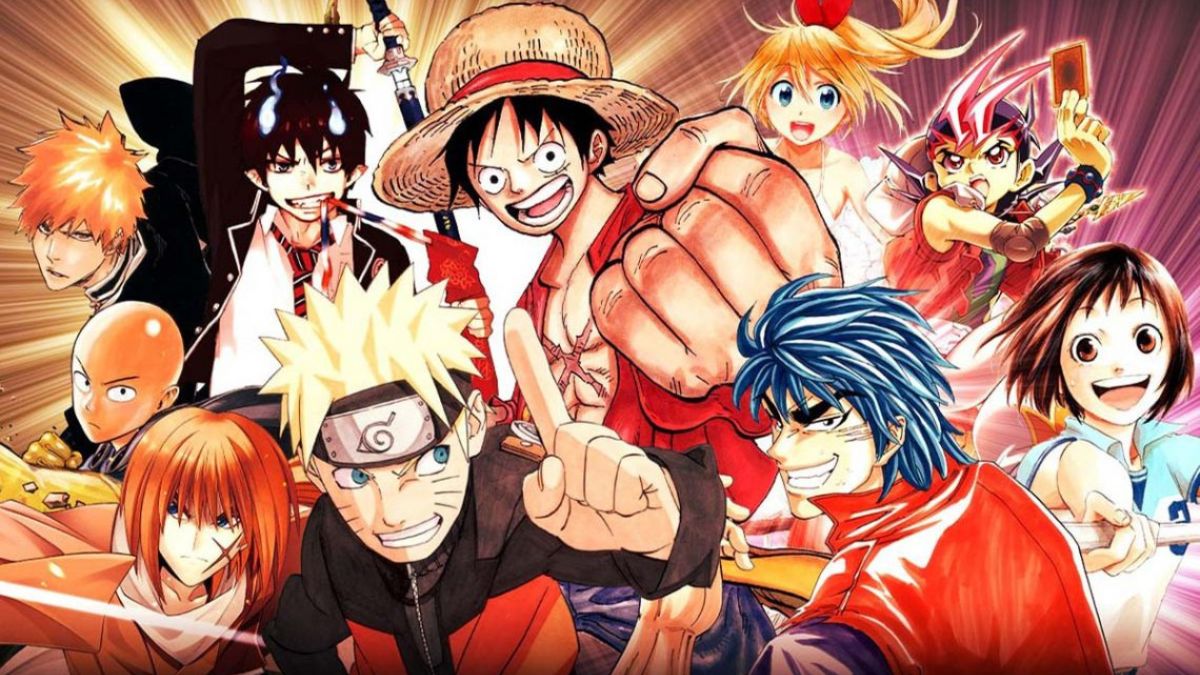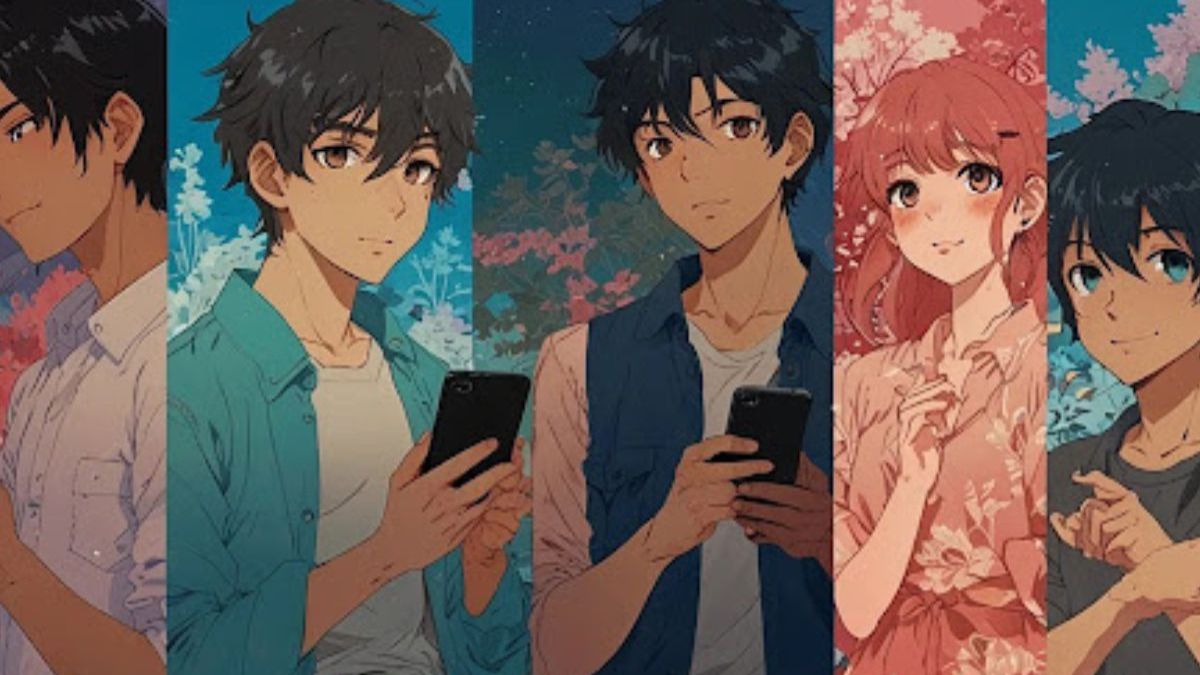ENTERTAINMENT
Manganelo: A Comprehensive Guide to the Popular Manga Reading Platform

Introduction
In the world of manga, fans are always on the lookout for platforms that offer a vast collection of titles for free. One such platform that has gained immense popularity is Manganelo (also known as MangaNelo). This website has become a go-to destination for manga enthusiasts who want to read their favorite series without paying for subscriptions.
What is Manganelo?
Manganelo is an online platform that provides free access to thousands of manga titles. It hosts both popular and lesser-known series, allowing users to read without requiring an account. The website is known for its:
- Extensive Library – Offers a wide range of genres, including action, romance, fantasy, horror, and more.
- User-Friendly Interface – Easy navigation with search and filter options.
- Regular Updates – New chapters are often uploaded shortly after their official release.
Despite its popularity, Manganelo operates in a legal gray area since it does not officially license most of the manga it hosts.
Features of Manganelo
1. Vast Manga Collection
Manganelo boasts a massive library, featuring:
- Ongoing Series – Latest chapters of popular manga like One Piece, Attack on Titan, and My Hero Academia.
- Completed Series – Full runs of classic and completed manga.
- Webtoons & Manhwa – Includes Korean and Chinese comics alongside Japanese manga.
2. No Registration Required
Unlike some legal platforms that require subscriptions, Manganelo allows users to read without signing up.
3. Mobile-Friendly Reading
The website is optimized for both desktop and mobile devices, with a smooth reading experience.
4. Bookmarking & History
Users can bookmark their favorite manga and track their reading history.
5. Multiple Language Options
While most content is in English, some manga are available in other languages.
Is Manganelo Legal?
Manganelo operates by aggregating manga from various sources, often without proper licensing. This raises several legal and ethical concerns:
1. Copyright Violations
Most manga on Manganelo are uploaded without permission from publishers or creators, making it a pirated content site.
2. Impact on Creators
Manga artists and publishers rely on sales and official releases for revenue. Using free, unauthorized sites deprives them of income.
3. Risk of Shutdown
Like many similar sites, Manganelo could face legal action and be taken down (as happened with its predecessor, MangaRock).
Alternatives to Manganelo
If you want to support creators while enjoying manga, consider these legal alternatives:
1. Official Subscription Services
- Shonen Jump+ (Viz Media) – Offers a vast collection of Shonen manga for a small fee.
- Manga Plus by Shueisha – Free official releases of popular Shonen Jump titles.
- Crunchyroll Manga – Includes manga alongside anime content.
- Kodansha Comics & ComiXology – Licensed manga with paid options.
2. Free & Legal Options
- Webtoon (Naver) – Specializes in Korean manhwa with free and premium models.
- Tapas & Tappytoon – Offer free chapters with ad-supported models.
3. Library & Digital Rentals
- Hoopla & OverDrive – Partner with local libraries to provide free manga access.
Is Manganelo Safe to Use?
While Manganelo itself doesn’t contain malware, free manga sites often come with risks:
1. Pop-up Ads & Redirects
Aggressive ads can lead to malicious sites. Using an ad-blocker is recommended.
2. Fake Download Buttons
Some ads mimic download links, potentially leading to viruses.
3. Data Privacy Concerns
Since the site is unofficial, user data may not be secure.
Safety Tips for Using Manganelo
✔ Use a VPN to protect your privacy.
✔ Install a reliable ad-blocker (uBlock Origin).
✔ Avoid clicking suspicious links or downloads.
✔ Consider supporting official sources when possible.
Conclusion: Should You Use Manganelo?
Manganelo provides easy, free access to manga, making it appealing for fans who can’t afford paid subscriptions. However, its illegal distribution harms creators, and users may face risks like malware or sudden site shutdowns.
If possible, support official manga platforms to ensure artists and publishers are compensated. If you must use free sites, take precautions to stay safe.
Ultimately, the choice depends on your priorities—convenience vs. ethical consumption.
Final Thoughts
Manganelo is a double-edged sword: it offers accessibility but at the cost of legality and security. As the manga industry evolves, more affordable and legal options are emerging, making it easier to enjoy manga while supporting its creators.
Would you continue using Manganelo, or switch to a legal alternative? Let us know in the comments!
ENTERTAINMENT
Exploring the Features of ReadMyManga com: A User’s Guide

Introduction to ReadMyManga com
If you’re a manga enthusiast, you know the struggle of finding a platform that truly caters to your needs. Look no further than ReadMyManga com. This site has emerged as a go-to destination for readers seeking an extensive collection of titles, intuitive navigation, and personalized features. Whether you’re new to the world of manga or a seasoned fan, this platform promises an enjoyable experience tailored just for you. Let’s dive into what makes ReadMyManga com stand out in the crowded landscape of online manga reading!
User-friendly Interface and Navigation
Navigating ReadMyManga com is a breeze, thanks to its user-friendly interface. The clean design makes it easy for newcomers and seasoned readers alike. You won’t find clutter or confusion here.
Categories are clearly marked, allowing you to dive straight into your favorite genres. Whether you’re in the mood for action, romance, or slice of life, finding what you want takes mere seconds.
The search function works like magic. Type in the title or author’s name, and relevant results pop up instantly. No more endless scrolling through lists!
Additionally, the page layout is intuitive. Manga covers are visually appealing and clickable, guiding you directly to chapters without hassle.
Bookmarking options let you track your reading progress seamlessly. Everything flows smoothly on ReadMyManga com—making your manga journey enjoyable from start to finish!
Extensive Collection of Manga Titles
ReadMyManga com boasts an impressive library that caters to all tastes. From mainstream hits to hidden gems, it has something for everyone.
Delve into classic series that have shaped the manga world. Explore ongoing titles that keep readers hooked with their thrilling plots and evolving characters.
The site also highlights new releases regularly. This keeps fans updated on fresh content without missing a beat.
Genres range from action-packed adventures to heartwarming romances and everything in between. No matter your preference, there’s a title waiting for you.
With user ratings and reviews, finding your next favorite becomes easier. The community shares insights, making the reading experience more engaging than ever before.
Features for Personalization and Organization
ReadMyManga com excels in offering users a highly personalized experience. You can create custom reading lists that allow you to track ongoing series or revisit old favorites effortlessly.
The tagging system is intuitive, making it simple to categorize and filter titles according to your preferences. This feature helps you quickly find what you’re looking for without unnecessary scrolling.
Another standout aspect is the ability to rate and review manga you’ve read. Your feedback adds value not just for yourself but also for other readers exploring new titles.
With notifications tailored to your interests, you’ll never miss an update on your favorite series again. The platform ensures every user has a unique journey through its vast library of content, keeping engagement high and frustration low.
Accessibility and Compatibility with Different Devices
ReadMyManga com stands out for its remarkable accessibility across various devices. Whether you’re on a desktop, tablet, or smartphone, the platform adapts seamlessly to your screen size.
The responsive design ensures that manga pages load quickly and maintain quality. You can dive into your favorite series without worrying about lag or distortion.
Navigating through titles is effortless, thanks to the mobile-friendly interface. This makes it easy to read anywhere – whether you’re commuting or relaxing at home.
Moreover, ReadMyManga com supports multiple browsers, giving users flexibility in their reading experience. You won’t face compatibility issues regardless of your preferred setup.
This level of accessibility enhances user engagement and satisfaction. It empowers readers to enjoy manga whenever they want with just a few clicks.
Social Features for Interaction and Communication
ReadMyManga com isn’t just a platform for reading; it’s also a vibrant community hub. Users can engage with one another through comments, creating an interactive experience that enhances the enjoyment of their favorite manga.
The comment sections under each title allow readers to share thoughts and opinions. This fosters lively discussions about plot twists or character development. Fans often bond over shared interests and recommendations, making it easy to discover new works.
Additionally, users can follow fellow manga enthusiasts. This feature helps keep track of friends’ activity on the site and highlights what they’re currently reading or enjoying.
For those who love sharing content, ReadMyManga offers options to post reviews or ratings. This feedback not only assists other readers but also adds depth to the overall reading experience by showcasing diverse perspectives on various titles.
Premium Membership Benefits and Pricing
ReadMyManga com offers a premium membership that enhances the reading experience significantly. Subscribers enjoy an ad-free environment, allowing for uninterrupted enjoyment of their favorite manga titles.
In addition to removing ads, premium members gain access to exclusive content. This includes early releases and special chapters not available to free users. It’s a treat for those who want first dibs on new stories or continuations of ongoing series.
Pricing is straightforward and competitive, making it accessible for most fans. A monthly subscription can be canceled anytime, providing flexibility. Discounts are often available for longer commitments like quarterly or annual plans.
Members also get priority customer support, ensuring any issues are resolved quickly. For avid readers looking for the best experience on ReadMyManga com, premium membership is worth considering.
Customer Support and Feedback System
ReadMyManga com takes customer support seriously. Users can easily access help when needed through their dedicated support section. This feature ensures that any questions or issues are promptly addressed.
The feedback system is another highlight. Readers have the opportunity to share their thoughts and experiences about various manga titles, contributing to a community-driven atmosphere.
This creates a sense of belonging among users. With every comment, readers not only express their opinions but also connect with others who share similar interests.
Additionally, the platform frequently encourages suggestions for improvement. This openness fosters trust and shows commitment to enhancing user experience continuously.
For those needing immediate assistance, quick response times make navigating challenges easier than ever before. Whether you’re navigating technical difficulties or looking for specific content, ReadMyManga com has your back at all times.
Comparison to Other Manga Websites
When it comes to manga websites, ReadMyManga com stands out for its user-centric design. Unlike many competitors, it offers a seamless experience that keeps readers engaged and coming back for more.
Many other platforms can feel cluttered or challenging to navigate. In contrast, ReadMyManga com presents a clean layout that prioritizes accessibility. This makes finding your next favorite title effortless.
While some sites rely heavily on ads, ReadMyManga com maintains a balance that enhances rather than disrupts the reading experience. Users appreciate this thoughtful approach.
Additionally, while certain platforms may have limited collections or outdated titles, ReadMyManga com boasts an extensive library continually updated with fresh content.
The community aspect also differs significantly; many users find interaction and feedback features on competing sites lacking compared to what’s available here.
Conclusion: Why ReadMyManga com is the Ultimate Destination for Manga Readers
For manga enthusiasts, finding the right platform can make all the difference. ReadMyManga.com stands out in a crowded market with its user-friendly interface and extensive library of titles. The site offers easy navigation that ensures readers quickly find their favorites or discover new gems.
The personalization features allow users to tailor their experience, organizing content exactly how they like it. Plus, accessibility across various devices means you can enjoy your manga on the go or at home without hassle.
Social interactions further enhance the reading journey, allowing fans to connect over shared interests. With options for premium membership providing additional benefits and an attentive customer support system ready to address any concerns, ReadMyManga.com puts readers first.
When compared to other manga websites, it’s evident why many prefer this platform. The combination of ease-of-use and a community feel creates an inviting atmosphere for both seasoned readers and newcomers alike.
Choosing ReadMyManga.com is more than just picking another website; it’s about immersing yourself in a vibrant world of storytelling and art where every click leads you deeper into adventure.
ENTERTAINMENT
The Rise of 9kmovies Casa: A Deep Dive into Its Popularity

Introduction to 9kmovies Casa
The digital age has transformed the way we consume entertainment, and among the myriad of streaming platforms emerging today, 9kmovies Casa stands out. With its vast library of films and user-friendly interface, it has captured the attention of movie enthusiasts worldwide. But what is it about 9kmovies Casa that makes it a go-to destination for countless viewers? From Bollywood hits to Hollywood blockbusters, this platform seems to have something for everyone.
As we delve deeper into the phenomenon known as 9kmovies Casa, we’ll uncover its rich history and evolution in the online streaming landscape. We’ll explore why so many people gravitate towards this particular site over others and examine some legal concerns surrounding its content. Additionally, we’ll consider how it’s impacting the movie industry at large and what lies ahead for this intriguing platform. Join us on this journey through cinema’s new frontier—where convenience meets controversy in an ever-changing world!
The History and Evolution of 9kmovies Casa
9kmovies Casa emerged as a response to the growing demand for accessible online content. It started as a small platform focused on sharing regional films and quickly gained traction due to its diverse offerings.
As user preferences shifted, so did 9kmovies Casa. The site began expanding its catalog to include international hits and popular series. This evolution attracted a wider audience looking for alternatives to traditional streaming services.
Over time, it developed an intuitive interface that made navigation simple. Users appreciated how easy it was to search for titles or explore various genres.
The platform’s growth mirrored the increasing reliance on digital media consumption during global events that kept people indoors. As lockdowns became commonplace, more viewers turned online for entertainment.
With regular updates and new features, 9kmovies Casa continues adapting, reflecting both technological advancements and changing viewer habits in the ever-evolving landscape of streaming entertainment.
The Reasons Behind Its Popularity
One of the primary reasons behind the popularity of 9kmovies Casa is its extensive library. Users can find a wide range of films, from classic hits to the latest blockbusters.
The platform’s user-friendly interface also plays a significant role. Navigating through various genres and categories makes it easy for viewers to discover new content effortlessly.
Another factor contributing to its rise is accessibility. With no subscription fees, many users can enjoy movies without financial constraints. This makes it particularly attractive in today’s economy.
Additionally, regular updates keep the content fresh and engaging. The site consistently adds new releases that attract both loyal fans and newcomers alike.
Word-of-mouth recommendations amplify its reach. Satisfied viewers share their experiences with friends and family, helping 9kmovies Casa grow organically within different communities.
Comparison with Other Online Streaming Platforms
When it comes to online streaming, 9kmovies Casa stands out among many competitors. Unlike mainstream platforms like Netflix or Hulu, it offers a vast collection of movies and series without subscription fees.
The interface is user-friendly, making navigation simple for users looking for quick access to content. In contrast, traditional services often require extensive browsing through curated lists.
Quality can be a mixed bag on 9kmovies Casa. While some films are available in high definition, others may not meet the standards seen on premium sites where production quality is carefully maintained.
Another significant difference lies in the selection of titles. 9kmovies Casa frequently updates its library with trending films from various genres that might take longer to reach paid platforms.
These unique characteristics contribute to an ever-growing user base seeking diverse viewing options beyond conventional streaming services.
Legal Concerns and Controversies
9kmovies Casa has not been without its share of legal challenges. The platform operates in a gray area, often raising questions about copyright infringement. Many filmmakers and studios have voiced their concerns over content being shared without proper licensing.
The site’s popularity does not shield it from the watchful eyes of authorities. Governments worldwide are cracking down on piracy, targeting sites like 9kmovies Casa to protect intellectual property rights. This has led to numerous shutdowns and domain changes for streaming platforms.
Users also face risks when accessing these sites. Potential exposure to malware and phishing scams is a serious concern among viewers seeking free entertainment. As such, many users remain unaware of the potential dangers lurking behind seemingly innocent links.
Such controversies create a complex landscape for both operators and consumers alike, fostering an ongoing debate about digital rights in the age of streaming.
Impact on the Movie Industry
9kmovies Casa has undeniably disrupted the traditional movie industry landscape. Its rise highlights a shift in how audiences consume content today. With instant access to films, many viewers prefer streaming over theater visits.
The platform challenges established studios and distributors. It forces them to rethink their release strategies. As more people opt for convenience, box office revenues may continue to dwindle.
Moreover, piracy concerns loom large around 9kmovies Casa’s operations. This raises questions about intellectual property rights and revenue allocation within the creative sector. Filmmakers are understandably anxious as their work circulates without proper compensation.
On the flip side, this trend could spark innovation within the industry itself. Studios might explore new business models or embrace direct-to-consumer approaches to meet changing demands from tech-savvy audiences who want flexibility in viewing options.
Future Prospects for 9kmovies Casa
The future of 9kmovies Casa looks intriguing, especially with the continual rise in streaming demand. As more viewers seek accessible content, this platform may adapt by enhancing user experience.
Technological advancements could play a significant role. Features like personalized recommendations and improved streaming quality are likely on the horizon. This would attract even more users looking for seamless entertainment options.
Moreover, partnerships with independent filmmakers could diversify its offerings. By showcasing indie films alongside mainstream hits, 9kmovies Casa might carve out a unique niche in the crowded online space.
However, navigating legal challenges will also be crucial. Adapting to regulations while maintaining popularity poses a balancing act that could shape its direction moving forward.
With evolving viewer preferences and trends in digital consumption, 9kmovies Casa is poised to respond dynamically to an ever-changing landscape.
Conclusion
The rise of 9kmovies Casa has undoubtedly transformed the online streaming landscape. Its unique offerings have attracted millions of users seeking an alternative to traditional platforms. The site’s evolution reflects a growing demand for accessible and diverse content while raising important legal and ethical questions.
As it continues to expand, so too does the conversation around its impact on the movie industry. Filmmakers are adapting to this new reality, exploring how they can engage with audiences in innovative ways beyond conventional distribution methods.
Looking ahead, 9kmovies Casa is poised for further growth. With ongoing advancements in technology and shifts in consumer behavior, its role within digital entertainment remains significant. Whether it will navigate legal challenges successfully or adapt to changing viewer preferences is yet to be seen, but what’s clear is that it has already made a mark on how we consume movies today.
ENTERTAINMENT
The Rise of Layarkaca: How It Became a Go-To Platform for Film Lovers

Introduction to Layarkaca
Film lovers around the world are always on the hunt for platforms that cater to their cinematic cravings. Enter Layarkaca, a name that has rapidly become synonymous with accessible and diverse film offerings. With its user-friendly interface and extensive library, this platform is transforming how we watch movies online. Whether you’re a fan of indie gems or blockbuster hits, Layarkaca has something for everyone. But what led to this rise in popularity? Let’s dive deeper into the fascinating journey of Layarkaca and uncover why it’s quickly becoming the go-to destination for film enthusiasts everywhere.
History and Evolution of Layarkaca
Layarkaca began as a modest platform catering to film enthusiasts seeking access to a diverse range of movies. Over the years, it gained traction among viewers who appreciated its user-friendly interface and extensive library.
Initially focused on Indonesian films, Layarkaca quickly expanded its offerings. It started including international blockbusters and indie gems alike. This evolution attracted a wider audience eager for varied content.
As technology advanced, so did Layarkaca’s capabilities. The site embraced streaming innovations that enhanced viewing quality while ensuring faster load times.
Community engagement also played a significant role in its growth. Viewers shared recommendations, formed discussions, and created a loyal fanbase that contributed to the platform’s vibrancy.
Throughout its journey, Layarkaca has adapted to changing viewer preferences while navigating the complexities of copyright issues in an ever-evolving digital landscape.
Features and Benefits of Layarkaca
Layarkaca stands out with its user-friendly interface, making navigation a breeze for film enthusiasts. Users can quickly find their favorite titles or discover new ones without any hassle.
The platform offers an extensive library of movies and TV shows across genres. From blockbusters to indie films, there’s something for everyone. This variety keeps viewers engaged and coming back for more.
High-quality streaming is another major advantage. Many users appreciate the option to choose between different resolutions based on their internet speed and device capabilities.
Additionally, Layarkaca regularly updates its collection with the latest releases. This ensures that fans never miss out on trending films or series.
Moreover, community features allow users to leave reviews and ratings, fostering interaction among film lovers. Such engagement enhances the viewing experience as people share recommendations and thoughts about what they’ve watched.
The Impact of Layarkaca on the Film Industry
Layarkaca has dramatically reshaped how audiences access films. By providing a vast library of content, it democratizes cinema for many who may not have the means to visit theaters regularly. This accessibility allows lesser-known films to gain traction and find dedicated viewers.
Moreover, Layarkaca serves as an alternative platform for indie filmmakers. They can showcase their work without traditional distribution hurdles. As a result, unique stories from diverse cultures emerge on screens far beyond their origins.
However, this proliferation raises questions about copyright and fair compensation within the industry. Many creators worry about piracy undermining their revenue streams. The challenge remains finding a balance between accessibility and protecting intellectual property rights.
As users flock to platforms like Layarkaca, traditional film distribution models face pressure to adapt or risk obsolescence in today’s digital age.
Popular Films on Layarkaca
Layarkaca has become a treasure trove for film enthusiasts. From blockbuster hits to indie gems, the platform offers an extensive library that caters to diverse tastes.
One standout feature is the availability of international films. Users can explore captivating stories from different cultures, enhancing their cinematic experience.
Recent popular titles include action-packed thrillers and heartwarming dramas. The latest superhero flicks are always in high demand, while classic films often find renewed popularity among viewers craving nostalgia.
The user-friendly interface makes it easy to navigate these offerings. Film lovers can quickly discover trending movies or lost classics with just a few clicks.
With regular updates, Layarkaca keeps its content fresh and engaging. This ensures fans never run out of options when seeking their next favorite watch.
How to Use Layarkaca for an Enhanced Film Viewing Experience
Using Layarkaca can transform your film experience into something truly special. First, create an account to unlock additional features and personalize your viewing journey.
Next, explore the user-friendly interface. The layout is intuitive, making it easy to navigate through genres or search for specific titles. Use filters to find new releases or hidden gems that suit your mood.
Consider adjusting video quality settings based on your internet speed. This ensures smooth playback without buffering interruptions.
Don’t forget about community engagement! Join discussions in comment sections after watching films; you might discover different perspectives that enrich your understanding of the movie.
Utilize technology by casting movies onto a larger screen via smart devices. This not only enhances visuals but also creates a cinematic atmosphere right at home.
Criticisms and Controversies Surrounding Layarkaca
Layarkaca, while popular among film enthusiasts, is not without its criticisms. One of the primary concerns revolves around copyright infringement. Many filmmakers argue that the platform enables illegal distribution of their work, undermining both revenue and creative rights.
Additionally, users have raised issues regarding the site’s reliability. Frequent server downtimes and buffering can detract from the viewing experience. This inconsistency frustrates viewers who simply want to enjoy a seamless movie night.
Another point of contention involves content quality. While Layarkaca offers a wide array of films, not all are available in high definition or even with proper subtitles. This can leave audiences disappointed when expectations aren’t met.
Moreover, some critics question whether platforms like Layarkaca promote piracy culture over legal alternatives. The debate remains heated as film lovers weigh convenience against ethical consumption choices in an ever-evolving digital landscape.
Future Plans and Innovations for Layarkaca
Layarkaca is gearing up for a transformative future. The platform aims to enhance user experience through advanced streaming technology. This includes faster loading times and improved video quality.
Additionally, Layarkaca plans to introduce personalized recommendations using AI algorithms. By analyzing viewing habits, users will receive tailored suggestions that match their tastes.
Another exciting development on the horizon is community engagement features. Users can expect forums and discussion boards where film lovers can connect over their favorite titles.
Moreover, Layarkaca is exploring partnerships with independent filmmakers. This could potentially provide a fresh array of content while supporting emerging talent in the industry.
With these innovations, Layarkaca is setting itself apart as more than just a streaming service; it’s evolving into an interactive hub for cinema enthusiasts looking for something unique.
Conclusion: The Future of Film Viewing with
The landscape of film viewing is rapidly evolving, and Layarkaca stands at the forefront of this transformation. As a platform that caters to the desires of film lovers everywhere, it has carved out a niche that combines accessibility with an extensive catalog. With its user-friendly interface and diverse offerings, Layarkaca continues to attract viewers looking for both mainstream hits and hidden gems.
As streaming technology advances and consumer preferences shift towards on-demand content, platforms like Layarkaca are likely to adapt even further. Innovations in user experience will enhance how audiences engage with films. Whether it’s through personalized recommendations or interactive features, Layarkaca seems poised to redefine how we enjoy cinema today.
With ongoing discussions around copyright issues and industry regulations, the future may also see changes in how such platforms operate while still satisfying viewer demands. The dialogue between creators and consumers will be crucial as we navigate these waters together.
Film enthusiasts can expect more from Layarkaca as it adapts to modern challenges while remaining committed to delivering quality content. This evolution signifies not just a trend but a new chapter in cinematic experiences that invites everyone into the world of storytelling through film.
-

 BUSINESS4 months ago
BUSINESS4 months agoBoost Your Brand with adsy.pw/hb3 Digital Solutions
-

 BUSINESS6 months ago
BUSINESS6 months agoTransform Your Business with MyWape
-

 TOPIC4 months ago
TOPIC4 months agoHow Appfordown Simplifies Your App Experience: Tips and Tricks
-

 TOPIC3 months ago
TOPIC3 months agoHow ATFBoru is Shaping Online Interaction in Unique Ways
-

 TOPIC6 months ago
TOPIC6 months agoWhy Wepbound is Revolutionizing the Way We Connect Online
-

 TOPIC4 months ago
TOPIC4 months agoSpeedyShort.com: Tips and Tricks for Effective Link Sharing
-

 TOPIC5 months ago
TOPIC5 months agoBehind the Screen: The Stories and Secrets of m0therearf
-

 TECHNOLOGY5 months ago
TECHNOLOGY5 months agoBunkralbum: A Comprehensive Overview
